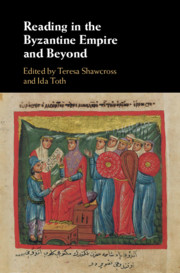Book contents
- Reading in the Byzantine Empire and Beyond
- Frontispiece
- Reading in the Byzantine Empire and Beyond
- Copyright page
- Dedication
- Contents
- Figures
- Contributors
- Preface
- Abbreviations
- Introduction to Books, Readers and Reading
- Part I Love for the Written Word
- Part II Contact with a Living Culture
- Part III Communication and Influence
- Part IV Modern Reading as Textual Archaeology
- Afterword
- Bibliography
- Index
- References
Part II - Contact with a Living Culture
Published online by Cambridge University Press: 07 September 2018
- Reading in the Byzantine Empire and Beyond
- Frontispiece
- Reading in the Byzantine Empire and Beyond
- Copyright page
- Dedication
- Contents
- Figures
- Contributors
- Preface
- Abbreviations
- Introduction to Books, Readers and Reading
- Part I Love for the Written Word
- Part II Contact with a Living Culture
- Part III Communication and Influence
- Part IV Modern Reading as Textual Archaeology
- Afterword
- Bibliography
- Index
- References
Summary

- Type
- Chapter
- Information
- Reading in the Byzantine Empire and Beyond , pp. 155 - 372Publisher: Cambridge University PressPrint publication year: 2018



